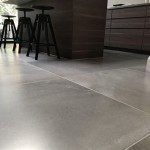When it comes to choosing the right tile for your home, there are two materials that typically stand out: ceramic and porcelain. While both materials are incredibly popular for home decor, there are some key differences between them that should be taken into consideration. In this article, we’ll discuss the pros and cons of ceramic and porcelain tiles so you can make an informed decision about which one is best for your home.
One of the main differences between ceramic and porcelain tiles is the material they are made from. Ceramic tiles are typically made from a mixture of clay, sand and water, while porcelain tiles are made from a more refined version of the same material, with a higher percentage of clay. This difference in composition makes porcelain tiles more durable, stronger, and less prone to cracking or chipping.
In terms of cost, ceramic tiles are generally more affordable than porcelain tiles. However, the lower cost of ceramic tiles also means that they may not be as durable or long-lasting as porcelain tiles. Porcelain tiles are often used in high-traffic areas, such as kitchens and bathrooms, where they can withstand more wear and tear. Ceramic tiles, on the other hand, may be more suitable for low-traffic areas, such as living rooms and bedrooms.
Another important difference between ceramic and porcelain tiles is their appearance. Porcelain tiles are often glazed, which means that they can be made to look like a variety of other materials, such as stone, wood, or metal. Ceramic tiles, on the other hand, are usually left unglazed, so they retain their natural appearance. Porcelain tiles can also be made in a variety of colors, while ceramic tiles are typically limited to white, beige, and other neutral shades.
When deciding between ceramic and porcelain tiles for your home, it’s important to consider the area you’ll be tiling, the cost, and the look you’re trying to achieve. Porcelain tiles are generally more durable and long-lasting, while ceramic tiles are usually more affordable and available in a wider range of colors and styles. Ultimately, the choice is yours, so take the time to weigh your options and choose the tiles that best suit your home.
:max_bytes(150000):strip_icc()/porcelain-tile-vs-ceramic-tile-1822583-FINAL-5b1ab0f043a1030036a6e6cc.png)





:max_bytes(150000):strip_icc()/porcelain-tile-vs-ceramic-tile-1822583_final-6771428f15ff4521a913e230a04ab5f5.png)



Related Posts








